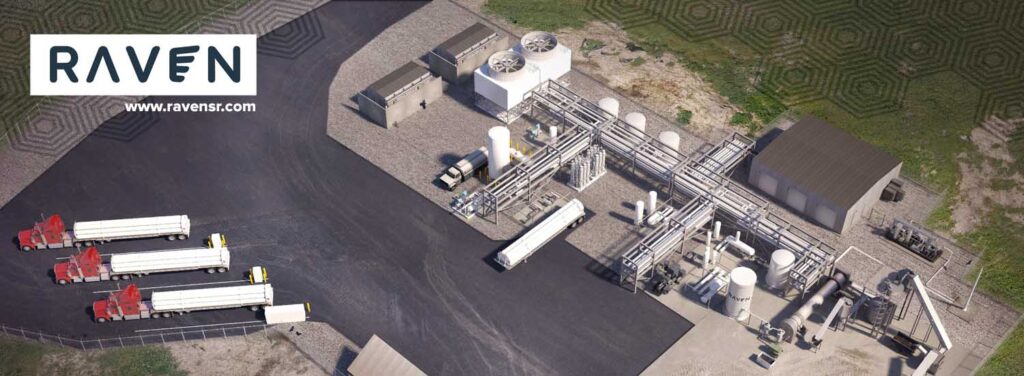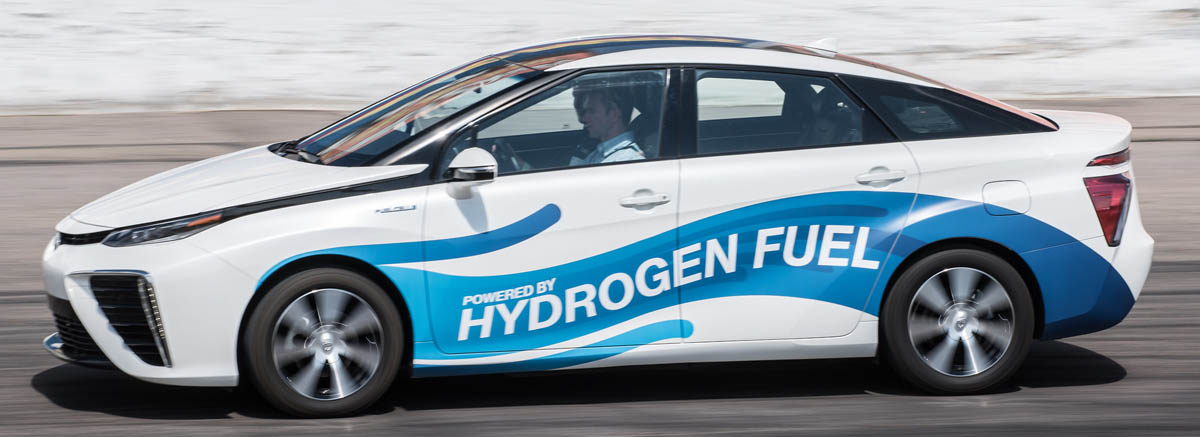
Low carbon intensity Hydrogen is the perfect clean and sustainable energy resource to utilize to help de-carbonize our world. As cities and towns look for ways to reduce their reliance on fossil fuels and lower their carbon emissions, hydrogen is becoming an increasingly attractive option. In this article, we will explore the benefits of clean hydrogen, how it is made, how it works, and ways cities and towns can use it for their energy needs.
Benefits of Clean Hydrogen
Clean hydrogen has several benefits that make it an attractive energy source for cities and towns. First and foremost, hydrogen is clean-burning and produces no harmful emissions when used as fuel. This means that hydrogen can help reduce air pollution in urban areas, which can have a significant impact on public health. Additionally, hydrogen is abundant and can be produced using renewable energy sources, such as wind and solar power, making it a sustainable option for cities and towns looking to reduce their carbon footprint.
- Clean-burning: Hydrogen is a clean-burning fuel that produces no harmful emissions when used as fuel. This means that hydrogen can help reduce air pollution in urban areas, which can have a significant impact on public health.
- Abundant: Hydrogen is the most abundant element in the universe, and it can be found in almost all organic compounds. This means that hydrogen has the potential to be a sustainable and widely available energy source.
- Versatile: Hydrogen can be used in a variety of ways to generate energy, including through fuel cells and combustion engines. This versatility makes hydrogen a promising option for a range of applications, from powering buildings and vehicles to supporting the power grid.
- Renewable: Hydrogen can be produced using renewable energy sources, such as wind and solar power, making it a sustainable option for cities and towns looking to reduce their carbon footprint.

There Are Several Ways That Cities And Towns Can Use Clean Hydrogen For Their Energy Needs:
- Hydrogen fuel cells: These can be used to generate electricity for buildings, homes, and even vehicles.
- Hydrogen boilers: These can be used to generate heat for buildings and homes.
- Hydrogen vehicles: Cities and towns can encourage the use of hydrogen-powered vehicles, such as cars, buses, and forklifts.
- Hydrogen storage: Hydrogen can be stored and used as needed to supplement other energy sources, such as solar or wind power.
- Industrial processes: Hydrogen can be used in a variety of industrial processes, including the production of chemicals, steel, and cement.
- Waste to Hydrogen: The Best option is converting landfill waste into hydrogen using a non-combustion steam methane reforming process that has been refined by Raven SR. This would allow cities to significantly reduce the amount of methane producing waste and create clean hydrogen to use for power generation, fuel for airports/buses/garbage trucks, schools, government buildings.
Overall, using hydrogen as an energy source has the potential to reduce a city or town's reliance on fossil fuels and lower its carbon emissions.
What is Hydrogen?
Hydrogen is the most abundant element in the universe, and it can be found in almost all organic compounds. In its pure form, hydrogen is a colorless, odorless, and tasteless gas that is lighter than air. Hydrogen has been used as a fuel for several decades, primarily in the space industry, but its use as a mainstream energy source is still in its early stages.
How is Clean Hydrogen Made?
Clean Hydrogen can be produced using a variety of methods, including steam methane reforming, electrolysis, and biomass gasification. Steam methane reforming is the most common method used to produce hydrogen on an industrial scale. This process involves reacting methane with steam to produce hydrogen and carbon dioxide. Electrolysis is another method that uses electricity to split water into hydrogen and oxygen. This process can be powered using renewable energy sources, such as wind and solar power, to produce clean hydrogen.
- Steam Methane Reforming: Steam methane reforming is the most common method for producing hydrogen, accounting for approximately 95% of global hydrogen production. It involves reacting methane (the main component of natural gas) with high-temperature steam in the presence of a catalyst to produce hydrogen gas and carbon dioxide. This process is relatively simple and cost-effective, and it can be scaled up or down to meet demand. However, the process does produce carbon dioxide as a byproduct, which can contribute to climate change if not captured and stored.
- Electrolysis: Electrolysis involves splitting water into its two main components, hydrogen and oxygen, using an electrical current. The process can be powered by renewable energy sources, such as wind or solar power, which makes it a sustainable option for producing hydrogen. Electrolysis also produces no harmful emissions, which makes it a clean option for hydrogen production. However, the process is currently more expensive than steam methane reforming, which can make it less competitive in certain markets.
- Methane pyrolysis: Methane pyrolysis is a process that involves splitting methane, the primary component of natural gas, into its constituent elements: hydrogen and carbon. This process is typically carried out at high temperatures, ranging from 700 to 1100 degrees Celsius, and without the presence of oxygen. The resulting hydrogen can be used for a variety of applications, including fuel cell vehicles and industrial processes. One of the key benefits of methane pyrolysis is that it produces hydrogen without emitting carbon dioxide, making it a potentially more sustainable way to produce hydrogen compared to traditional reforming methods, which typically rely on fossil fuels and produce carbon emissions. Additionally, methane pyrolysis can be carried out using renewable energy sources, such as solar or wind power, which can further reduce its environmental impact. However, the cost and efficiency of methane pyrolysis currently limit its widespread adoption, and further research and development are needed to make this technology more practical and cost-effective.
- Biomass Gasification: Biomass gasification involves heating organic material, such as wood chips or agricultural waste, in the absence of oxygen to produce a gas mixture containing hydrogen, carbon monoxide, and other gases. The hydrogen can then be separated and used as fuel. This method has the advantage of using renewable and locally available feedstocks, which can reduce dependence on fossil fuels and increase energy independence. However, the process can be more expensive and less efficient than steam methane reforming, especially at smaller scales.
- Waste to Hydrogen: Waste to hydrogen using non-combustion steam methane reforming is a process that involves converting waste materials into hydrogen using a combination of steam methane reforming and gasification. This technology uses waste materials such as landfill waste, wood waste, and agricultural waste, which are fed into a gasification system that produces a synthesis gas (syngas) consisting of hydrogen, carbon monoxide, and other gases. The syngas is then processed using steam methane reforming to separate the hydrogen from the other gases, producing high-purity hydrogen that can be used for a variety of applications.

One of the key benefits of this process is that it allows waste materials that would otherwise be discarded to be used to produce clean hydrogen, reducing the amount of waste sent to landfills and lowering greenhouse gas emissions. In addition, this technology can be powered by renewable energy sources, such as solar or wind power, further reducing its environmental impact.
Key Hydrogen, a hydrogen production and delivery company, is partnering with Raven SR, a waste-to-energy technology company, to develop waste-to-hydrogen projects in California. By combining Key Hydrogen's expertise in hydrogen production and delivery with Raven SR's gasification technology, the two companies aim to create a closed-loop system that converts waste into clean hydrogen, providing a sustainable solution for both waste management and energy production. This technology has the potential to be particularly beneficial for cities and towns, which generate large amounts of waste and could benefit from locally produced clean hydrogen.
Disadvantages of Hydrogen
Although hydrogen has many benefits as an energy source, it also has some disadvantages that must be considered. One of the biggest challenges associated with hydrogen is its production. Currently, the majority of hydrogen is produced using fossil fuels, which means that its use still contributes to greenhouse gas emissions. Additionally, hydrogen is difficult and expensive to transport and store, which can make it less practical in certain applications.
How Does Hydrogen Work?
Clean Hydrogen can be used in a variety of ways to generate energy, including through fuel cells and combustion engines. In a fuel cell, hydrogen reacts with oxygen to produce electricity, heat, and water. This process is highly efficient and produces no emissions other than water. In a combustion engine, hydrogen is burned to generate heat, which can then be used to generate electricity or power a vehicle.
How is Hydrogen Transported?
Hydrogen can be transported in a number of different ways, depending on the distance and volume of the hydrogen being transported. Here are some of the most common methods:
- Compressed Gas: Hydrogen can be compressed into high-pressure cylinders or tube trailers for transport. This is the most common method for transporting small quantities of hydrogen, such as for fuel cell vehicles.
- Liquid Hydrogen: Hydrogen can be cooled to extremely low temperatures to become a liquid, which reduces its volume and makes it easier to transport. Liquid hydrogen is commonly transported in specially designed tanker trucks or railcars.
- Pipeline: Hydrogen can be transported through pipelines, just like natural gas. However, the transportation of hydrogen through pipelines requires special materials and equipment, as hydrogen can embrittle some metals.
- Chemical Carriers: Hydrogen can be transported in chemical carriers, such as ammonia or methylcyclohexane, which can be more practical for longer distances or larger volumes. These carriers can be converted back into hydrogen at the point of use.
 Each method of transportation has its own advantages and disadvantages. Compressed gas is the most common method for small quantities of hydrogen, but it can be costly for larger volumes. Liquid hydrogen can be more efficient for long-distance transport, but it requires special equipment and can be expensive to produce. Pipeline transportation is ideal for stationary applications, but it can be difficult to retrofit existing natural gas pipelines to transport hydrogen.
Each method of transportation has its own advantages and disadvantages. Compressed gas is the most common method for small quantities of hydrogen, but it can be costly for larger volumes. Liquid hydrogen can be more efficient for long-distance transport, but it requires special equipment and can be expensive to produce. Pipeline transportation is ideal for stationary applications, but it can be difficult to retrofit existing natural gas pipelines to transport hydrogen.
Chemical carriers can be more practical for larger volumes or longer distances, but the process of converting the carrier back into hydrogen requires energy and can be expensive. As the use of hydrogen continues to grow, transportation methods will continue to evolve and improve.
Clean Hydrogen Projects in the United States
There are several hydrogen projects underway in the United States, including the development of hydrogen fueling stations, the use of hydrogen in transportation, and the integration of hydrogen into the power grid. One of the most significant projects is the H2@Scale initiative, which aims to enable the production, transport, storage, and use of hydrogen across multiple sectors, including transportation, industry, and power generation.
Current hydrogen companies operating in the United States, ranging from fuel cell vehicles to power plants. Many prominent companies are investing in hydrogen technology, including:
- Plug Power: Plug Power is a leading provider of hydrogen fuel cell solutions for transportation and stationary power applications. The company has developed fuel cell systems for forklifts, delivery vans, and other vehicles, as well as backup power systems for data centers and other facilities.
- Bloom Energy: Bloom Energy is a provider of solid oxide fuel cell technology for power generation. The company's fuel cells are capable of generating electricity from a wide range of fuels, including hydrogen and natural gas, and can be used in a variety of applications, from residential homes to large-scale power plants.
- Linde: Linde is a global industrial gas company that is actively involved in the production, storage, and transportation of hydrogen. The company has invested in several hydrogen projects around the world, including a joint venture with ITM Power to develop hydrogen refueling stations in the United Kingdom.
- Key Hydrogen: Key Hydrogen is a hydrogen production and logistics company that specializes in providing clean hydrogen solutions to cities across America. The company is working to expand its operations across the United States to create affordable hydrogen solutions for city infrastructure initiates.
- Air Liquide: Air Liquide is a global supplier of industrial gases and hydrogen. The company has developed a wide range of hydrogen solutions, including hydrogen fueling stations, hydrogen production systems, and hydrogen energy storage solutions.
- Cummins: Cummins is a manufacturer of diesel and natural gas engines, as well as hydrogen fuel cell systems. The company's fuel cell systems are designed for commercial and industrial applications, including backup power and material handling equipment.
Each of these companies is playing an important role in advancing hydrogen technology in the United States. Whether through developing new fuel cell systems, building hydrogen refueling infrastructure, or producing and delivering hydrogen, these companies are helping to make hydrogen a viable and practical solution for a wide range of applications.
Different Types of Hydrogen Technology
 There are several different types of hydrogen technology that cities and towns can use to meet their energy needs. These include fuel cells, hydrogen storage, and hydrogen combustion engines. Fuel cells are particularly useful for powering buildings and vehicles, while hydrogen storage can be used to supplement other energy sources, such as wind and solar power. Hydrogen combustion engines are another option, particularly for heavy-duty applications, such as trucks and buses. Here are some of the most important:
There are several different types of hydrogen technology that cities and towns can use to meet their energy needs. These include fuel cells, hydrogen storage, and hydrogen combustion engines. Fuel cells are particularly useful for powering buildings and vehicles, while hydrogen storage can be used to supplement other energy sources, such as wind and solar power. Hydrogen combustion engines are another option, particularly for heavy-duty applications, such as trucks and buses. Here are some of the most important:
- Fuel Cells: Fuel cells use hydrogen and oxygen to create electricity, with water being the only byproduct. Fuel cells are highly efficient and have a wide range of applications, from powering vehicles to providing backup power for buildings.
- Hydrogen Combustion: Hydrogen can be burned in a combustion engine, much like gasoline or natural gas. However, this technology has some challenges, such as controlling emissions and optimizing efficiency.
- Electrolysis: Electrolysis is the process of using electricity to split water into hydrogen and oxygen. This can be done using renewable energy sources, such as wind or solar power, to create "green hydrogen" that is produced using clean energy.
- Reforming: Reforming is a process where hydrogen is extracted from hydrocarbons, such as natural gas. This is a common method for producing hydrogen at large scales, but it also produces carbon emissions.
- Storage: Hydrogen can be stored in a variety of ways, including compressed gas, liquid hydrogen, and solid-state storage methods. This is an important technology for making hydrogen more practical for use in transportation and as a backup power source.
Each type of hydrogen technology has its own benefits and challenges. Fuel cells are highly efficient and have a wide range of applications, but they can be expensive to produce. Hydrogen combustion is a relatively simple technology, but it requires careful management of emissions. Electrolysis can produce "green hydrogen" that is produced using clean energy, but it can be expensive and energy-intensive. Reforming is a common method for producing large volumes of hydrogen, but it produces carbon emissions.
Finally, storage methods are critical for making hydrogen practical for use in transportation and backup power, but they require careful management to ensure safety and efficiency. Overall, each type of hydrogen technology has a role to play in the transition to a cleaner, more sustainable energy future.
Our Thoughts On Clean Hydrogen For Cities
Hydrogen has the potential to be a clean, sustainable, and abundant energy source for cities and towns looking to reduce their carbon emissions and dependence on fossil fuels. Although hydrogen is still in the early stages of adoption as a mainstream energy source, there are several promising projects and technologies underway in the United States and around the world.
As more cities and towns explore ways to transition to cleaner energy sources, hydrogen will likely play an increasingly important role in the energy mix. With its many benefits, including its clean-burning properties, abundance, and versatility, hydrogen has the potential to help create a more sustainable future for all.
While hydrogen has some challenges to overcome, it offers significant benefits as a clean and sustainable energy source for cities and towns. By investing in hydrogen projects and technologies, cities and towns can help reduce their carbon emissions, improve air quality, and create a more sustainable future. As the technology and infrastructure for hydrogen continue to develop, it will likely become an increasingly important part of the global energy mix.

